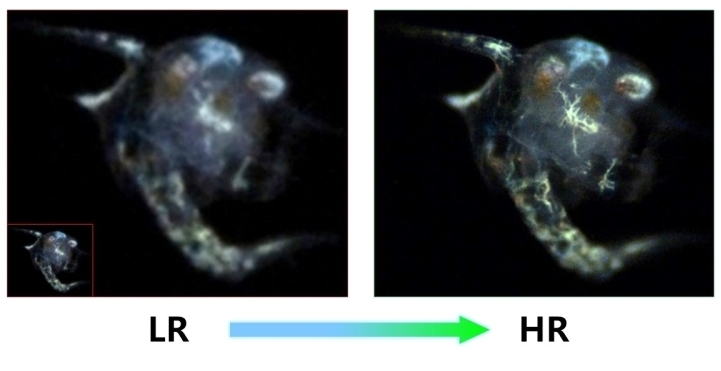Due to the limitation of the wave properties of light, underwater microscope and camera compromise between their imaging resolution and field of view for in situ observations.
In order to enlarge the sampling volume, they usually adopt lower imaging magnifications. However, this will sacrifice the imaging resolution and bring challenges for subsequent plankton species identification.
To alleviate this magnification-resolution dilemma, Dr. LI Jianping's group from the Shenzhen Institute of Advanced Technology (SIAT) of the Chinese Academy of Sciences has developed a novel image super-resolution method for restoring resolutions of in situ plankton images from low to high digitally.
Their study entitled "Super-Resolution for In Situ Plankton Images" was published at the International Conference on Computer Vision 2021.
The researchers trained a deep learning model called Enhanced Deep Residual Net-work (EDSR) with a large-scale real-world dataset called IsPlanktonSR. During the training, they tried different loss functions and compared the model performance by using traditional downsampled and the IsPlanktonSR data sets.
Through extensive experiments, the team has demonstrated that the model trained on real data through the contextual loss has delivered the best visual and quantitative SR performance.
"The model has been proved to generalize well to images of various plankton species or captured by different instruments," said Dr. LI.
In the future, the developed technology is anticipated to enhance the existing plankton imageries and strengthen next-generation plankton imagers for better observation capabilities and hence deeper our understanding of the mysteries deep ocean.







